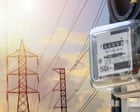
In a significant stride towards sustainable energy solutions, Australia is experiencing an unprecedented rise in household battery installations. This surge, characterized as “off the charts” by industry analysts, is largely driven by a new federal government subsidy program. This initiative offers a 30% subsidy on home batteries, leading to over 11,500 applications within the first three weeks of its introduction.
Australia, a nation that has long placed ecological responsibility at the forefront of policy-making, is now embarking on a second revolution in home electricity. This movement echoes the dramatic uptake of rooftop solar installations seen 15 years ago, sparking optimism for a cleaner energy future. With the current trajectory, it is projected that households across the country could collectively install a capacity of 10,000 megawatts (MW) in just five years. This figure represents half of the total coal power capacity currently in use nationwide, marking a transformative shift in energy reliance.
The burgeoning interest in household batteries is more than just a trend; it reflects a growing commitment to renewable energy resources and energy independence. These batteries provide not only an efficient way to store solar energy generated during sunny periods but also serve a vital role in energy management, especially during peak demand times or when solar generation dips. The ability to store and efficiently manage their own energy is empowering households, offering them greater control over their energy use and costs.
Industry experts highlight that the synergy between solar panels and battery systems could drastically reshape Australia’s energy landscape. The shift encourages a decentralized energy model where individual households contribute to both local and national power supplies, reducing the strain on existing grid infrastructure. This move towards decentralized energy aligns with global efforts to mitigate the impacts of climate change through innovation and investment in sustainable technologies.
Government support, in the form of financial incentives, plays an instrumental role in this transition. By reducing the upfront costs associated with purchasing home batteries, the subsidy makes these systems more accessible to a diverse range of homeowners. This accessibility is crucial in driving widespread adoption and ensuring that the benefits of renewable energy resources are equitably distributed across various economic demographics.
Moreover, the proliferation of household batteries in Australia is seen as a catalyst for broader economic benefits. As demand for these technologies rises, so too does the potential for job creation within manufacturing, installation, and maintenance sectors related to home energy systems. This growth not only underscores the strategic importance of investing in renewable technologies but also highlights the potential for significant economic stimulus arising from green energy initiatives.
While the program is still in its early stages, policymakers and industry stakeholders remain keenly focused on tracking its outcomes and refining the approach to maximize its effectiveness and reach. The lessons learned from this initiative could serve as a valuable blueprint for other nations eager to enhance their renewable energy adoption strategies.
In conclusion, Australia’s surge in household battery installations marks a pivotal moment in the country’s energy transition narrative. Driven by strategic government intervention and a collective move towards sustainable living, this development holds the promise of a more resilient and eco-friendly energy landscape that benefits individuals, communities, and the environment at large.
Source: {link}
